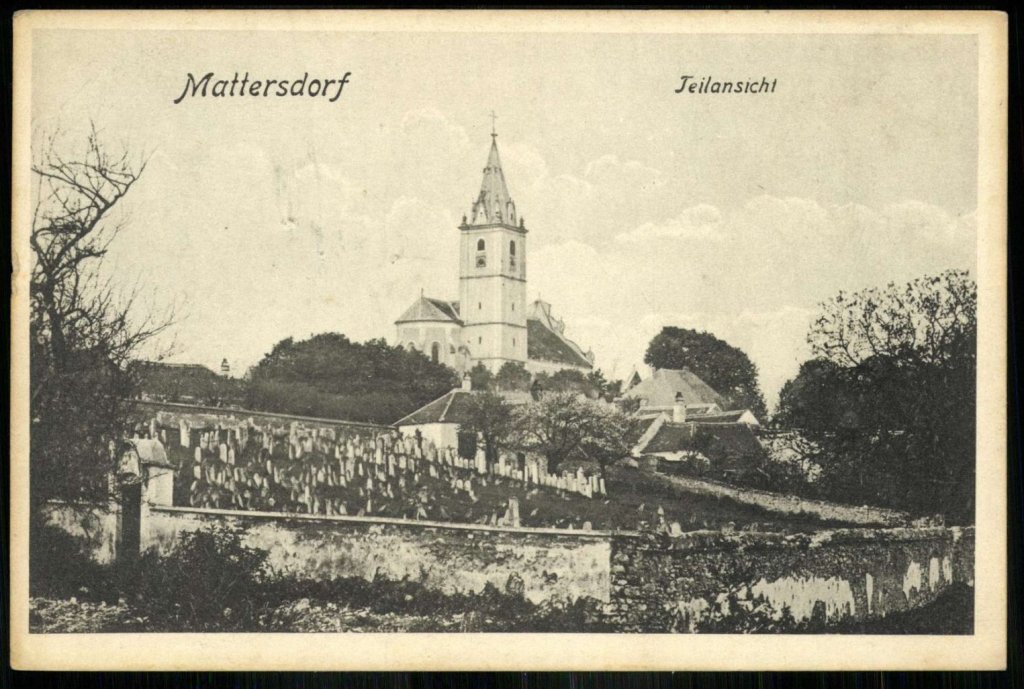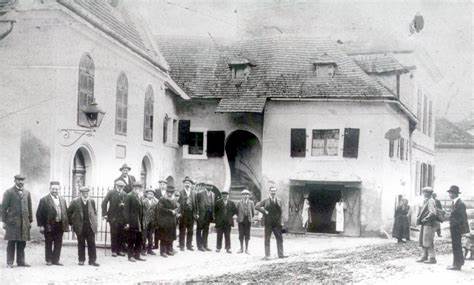When traveling in provincial areas of Eastern Europe, I always get the sense that there is much to these places than I could possibly ever find out. This makes me want to dig deeper, but sources in English are limited. Nonetheless, I am always on the lookout for any information that might be intriguing. Many times, while reading about one thing, I come upon another. This is what happened the other day while I was researching Burgenland. I came upon a stillborn republic that preceded it. I had never heard of this republic before. I doubt many in Austria have either. That is because it lasted only two days.

Happy Days – Mattersdorf (Nagymarton) before the war
Power Vacuum – An Unprecedented Opportunity
Throughout history, ambitious, infamous, and ridiculous people have dreamed of creating their own fiefdoms. They imagine these filled with like-minded people that share the same interests. Such dreams rarely come to fruition. Very few people are willing to act on what they imagine. They lack the agency or will to try and make these dreams come true. Some that would act never get the opportunity. Circumstances that are beyond most people’s control dictate what is politically possible. During times of peace and stability there is very little support for upending the existing social order. Many have tried anyway, much to their detriment. Occasionally, an opportunity arises. Political and societal upheaval due to economic calamity, pandemics, or warfare offer unprecedented opportunities. The ambitious try to take charge and steer the situation in a specific direction that favors them and their supporters.
The headstrong believe they have finally found their moment of destiny. This often leads to disastrous or ridiculous results. Rarely does it lead to success. History is littered with failed ideas that while they might have made sense at the time to those propagating them, in retrospect they look absurd. A few of these absurdities occurred in the lost lands beyond Hungary’s borders during the aftermath of World War I and prior to the peace treaties that transformed the region. Chaos and crisis offered opportunities. Long established institutions of law and order were crumbling. The center would not hold. Austria-Hungary had vanished. A power vacuum developed. Into it stepped political opportunists who declared the Republic of Heinzenland, a short-lived precursor to Burgenland.

Before the war – Postcard of Mattersdorf (Nagymarton) in the early 20th century
Order & Chaos – Crisis Mismanagement
It is difficult to imagine just how chaotic parts of Europe were in the final months of 1918. The traditional narrative of World War I does not do this period justice. In school, I learned that the war ended on the 11th hour of the 11th day of the 11th month. That was a pithy way of describing the armistice. The Germans capitulated and the soldiers made their way back home. The leaders of the victorious powers would soon turn to peacemaking and try to make a new world safe from war. Woodrow Wilson’s Fourteen Points would provide the direction. A closer look at history shows that there was a lot more going on in November 1918. The problem with the traditional narrative is that in many places the war may have “officially” ended, but it continued to simmer. In parts of Central and Eastern Europe it had metastasized into all kinds of smaller armed conflicts between disgruntled soldiers, paramilitary groups, communists, nationalists and monarchists. This situation had been provoked by the disintegration of the Austro-Hungarian empire. The cliché that power abhors a vacuum was never truer as political and ethnic factions vied for control of the empire’s territory. Wilson’s call for self-determination manifested itself in a call to arms across the region. The situation had turned into the geopolitical equivalent of every man for himself.
An apt description of the situation might go further and say that it was every military force and political adventurer for themselves. Each was fighting for their own interests and had political ideas to go with the guns. These ideas came in the form of republics that attempted to bring order to the chaos. The wastebin of this period is littered with regional republics that had very little chance of succeeding. That certainly did stop their supporters from trying. Several of these were existential threats to regions that had been part of the Hungarian controlled half (Transleithania) of the Austro-Hungarian Empire. These incipient republics undermined the notion that Hungary would continue to control these outlying regions. They were declaring independence and breaking away from Hungary.
From the Hungarian perspective, this had to be stopped. If not, Hungary would lose these lands and the ethnic Hungarians who lived in them would be living in states dominated by other ethnic groups. Furthermore, the breakaway republics were setting a dangerous precedent that others might soon follow. Among the newly founded states were the Republic of Prekmurje in eastern Slovenia and the Republic of Banat in southwestern Romania/northeastern Serbia. These states were small and maintaining their independence would be extremely difficult. They could dissolve just as fast as they rose. The Republic of Heinzenland offers a telling example.

Point of contention – Men on the street in Mattersdorf (Nagymarton)
Breaking Away – On The Verge
In West Hungary, ethnic Germans were two-thirds of the population in the counties of Moson, Sopron and Vas. With regions of the now vanished Austro-Hungarian Empire starting to go their separate ways, it was just a matter of time before the idea took hold in West Hungary. This was an unprecedented opportunity for the majority ethnic group to get out from under Hungarian rule and join their brethren in a German-Austria that was beginning to form. Like other ethnic groups in the empire. they had chaffed at Magyarization policies that imposed the Hungarian language on them prior to the war.
If the Germans of West Hungary acted with speed and decisiveness they could become part of a German-Austria that would better represent their interests. Self-determination was self-interest. These Germans should probably have been in the Austrian administered half (Cisleithania) of the Austro-Hungarian Empire all along. Now was their chance to set a different course for their future. In November 1918, ideas were afloat for a breakaway republic. In the chaotic political environment, separatism began to spread like wildfire. The situation in the town of Mattersburg (Mattersdorf until 1924/Nagymarton in Hungarian) was on the verge of an explosion.
Click here for: Behind The Facade – From Mattersburg To Heinzenland (The Lost Lands #52b)
